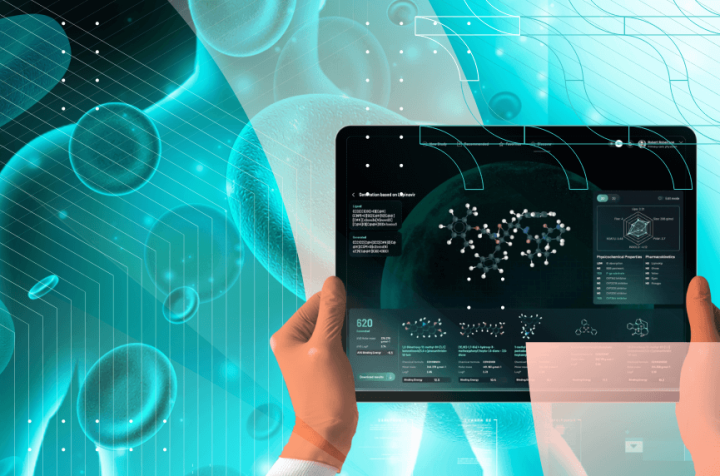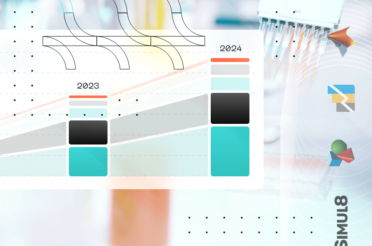Software for pharmacokinetic analysis has grown to be an essential part of contemporary clinical trials and drug development. It helps researchers better understand how drugs are absorbed, distributed, metabolized, and excreted (ADME).
With the help of the analysis of drug concentrations in plasma over time, these technologies offer valuable insights into the behavior of drugs in the human body. The topic included in this article will help you get into more detail about its role and benefits in clinical trials.
What’s more, researchers can obtain comprehensive descriptions of pharmacokinetic characteristics such as maximum concentration, renal clearance, and loading dose. This is possible due to using the program, which integrates intricate mathematical models to mimic drug concentration-time patterns.
Software for pharmacokinetic analysis makes it easier to handle and interpret large datasets, turning unprocessed data into insightful conclusions. The software is essential for doing bioequivalence analysis, creating concentration-time curves, and assessing medication interactions in clinical pharmacology.
Introduction to pharmacokinetic analysis software
The study of medication absorption, distribution, metabolism, and excretion from the body over time is known as pharmacokinetics. The intensity and duration of the beneficial and negative effects of medications and chemicals are also related to these processes.
This tool is used in toxicology, pharmacology, and biopharmaceutical research to optimize the dose and dosing schedule.
The following important areas of drug development will benefit from the use of the pharmacokinetic analysis software:
- Dose response analysis;
- Lead optimization and identification;
- Bioequivalence analysis of products;
- Dissolution data analysis;
- In vitro-in vivo correlations for formulations;
- Modeling;
- Predictions.
When making decisions, these kinds of assessments are essential for saving money and time. Academic institutions and the research groups and consultants in the pharmaceutical sector, offering services to the industry, will find value in the analysis.
The pharmacokinetic behavior of medicine in an individual as well as in a population can be predicted by pharmacokinetic (PK) modeling and simulation. While population simulations use data from several patients, individual simulations use data from a single participant.
Extensive PK sampling is necessary for each participant in an individual PK analysis (human or animal). Because Necessary Condition Analysis (NCA) is a fast and repeatable technique, it is frequently used to characterize the PK of individual data.
Compartmental PK models can also be fitted to particular patient data, making use of all the information at hand and enhancing comprehension of the absorption phase and other PK processes. Predictions derived from individual PK analyses, however, might not apply to patients who are not like the sampled individuals.
Population PK analysis assesses the entire research population while taking individual differences (i.e., covariates) into account. It employs both intense and sparse sampling. Longer analysis times may result in a final model that is contingent on the order in which the analyst makes judgments during the model selection process.
To forecast the population and comprehend how members of a population differ from one another, a qualified population PK model might be helpful.
Benefits of pharmacokinetic analysis software in clinical trials

The integration of pharmacokinetic analysis software in clinical trials offers numerous benefits that significantly improve the research process. Here is a short list of some of the advantages it offers.
Streamlined Data Analysis
By automating intricate computations, pharmacokinetic analysis software streamlines data processing and cuts down on the time and effort needed to evaluate big datasets.
H1 testing and model diagnostic evaluation may be completed rapidly by researchers thanks to built-in capabilities like automatic model comparison and statistical tests. Because of its efficiency in PK data analysis, researchers can spend less time manually manipulating data and more time evaluating the results.
Improved Data Presentation
The program generates comprehensive summary statistics and confidence intervals and makes a richer dataset available via sophisticated visualization capabilities. With the help of this capacity, researchers can do population PK analysis and find candidate variables while taking drug metabolism and body weight into account.
Comprehensive decision-making is facilitated by the software’s more readable data presentation.
Enhanced Accuracy and Precision
Pharmacokinetic software allows for accurate estimation of pharmacokinetic parameters through noncompartmental analysis and nonlinear mixed effects models. By precisely forecasting medication exposure and interactions—a critical factor in figuring out the right loading and maintenance doses—it aids in the optimization of dosage regimens.
This accuracy guarantees consistent and dependable outcomes from clinical trials.
Facilitated Regulatory Compliance
With enabling the production of comprehensive clinical trial reports that meet legal specifications, the program guarantees accurate and logical data presentation. By improving communication with scientific communities and regulatory authorities, this speeds up the approval process for new pharmaceuticals.
Clinical trial success is enhanced by the software, which upholds strict standards of accuracy and compliance.
Support for Personalized Medicine
Pharmacokinetic analysis software enables the personalization of medication therapy by evaluating the unique patient data and pinpointing particular patient subgroups. This is especially helpful in complex therapeutic domains where treatment outcomes are greatly impacted by patient variability.
By customizing treatment plans to meet each patient’s needs, the program helps clinical practice promote personalized medicine.
Role of pharmacokinetic analysis software in drug development
Pharmacokinetic analysis software is essential for optimizing drug dosage schedules and determining therapeutic efficacy in the drug development process. By estimating pharmacokinetic parameters and assessing dose-response correlations, the software helps in the formulation of dosage strategies.
This is necessary in order to figure out the right loading and maintenance doses in order to reach the target plasma drug concentrations.
In vitro-in vivo correlations
Additionally, pharmacokinetic software plays a key role in in vitro-in vivo correlation (IVIVC), which establish a connection between the study of drug dissolution data and clinical results.
Researchers can forecast drug exposure and possible interactions by modeling plasma concentration curves and drug distribution. This makes it easier to identify various metabolic pathways and makes it easier to customize medication development plans for particular patient populations.
Pharmacokinetic analysis software also helps determine the best ways to deliver drugs—oral, intravenous, or transdermal—by contrasting their absorption properties and pharmacokinetic profiles. Moreover, the program allows for the evaluation of drug degradation products and stability, offering valuable information that can direct the creation of more potent and stable medication formulations.
Drug prescription during pregnancy
It is unrealistic to expect most women to stop taking prescription and over-the-counter drugs during pregnancy due to preexisting or pregnancy-related disorders requiring pharmacotherapy, despite physiological changes affecting drug pharmacokinetics (PK).
These changes necessitate dosage adjustments, and regulatory agencies, along with the scientific community, are emphasizing the importance of guidelines and incentives for drug developers, as well as promoting more phase four trials involving pregnant women.
Since PK data for new drugs are often lacking, making evidence-based dosing decisions is challenging, so efforts must focus on expanding PK information to ensure pregnant women can receive effective treatments.
Treatment of HIV virus
Another specific implementation of PK analysis software in drug development would be in individuals dealing with the HIV virus. While most HIV-positive individuals see a reduction in their viral load thanks to Highly active antiretroviral therapy (HAART), the virus is not completely eradicated. As a result, the medication must be taken continuously.
It has been suggested that finding the ideal dosage or stopping the treatment under specific circumstances can lessen the load of adverse effects. One early attempt to optimize medication administration was structured treatment interruptions (STI), in which antiretroviral medicines are discontinued either for a predetermined amount of time or based on CD4 numbers.
Popular pharmacokinetic analysis software tools

Pharmacokinetic (PK) analysis is performed in the pharmaceutical business using a number of well-liked software programs.
A few popular pieces of PK software are:
- NONMEM: The software program NONMEM (Nonlinear Mixed Effects Modeling) is frequently used for population PK modeling and analysis. It makes use of nonlinear mixed-effects modeling to enable sophisticated modeling of PK data and parameter estimation.
- Simcyp: A PBPK modeling and simulation program called Simcyp is used to forecast the results of PK and drug-drug interactions. It is especially well-known for its use in PK prediction across a range of demographics, including pediatrics and certain ethnic groups.
- MoBi with PK-Sim: Bayer has developed modeling and simulation platforms, PK-Sim and MoBi. While PK-Sim is used to create PBPK models, MoBi enables model-based PK/PD data analysis and simulation.
- Phoenix WinNonlin: A popular program called WinNonlin offers a full range of clinical pharmacokinetics analysis methods, such as population PK modeling, compartmental modeling, and non-compartmental analysis.
- GastroPlus: GastroPlus is a simulation program that combines physiologically based pharmacokinetics (PBPK) with PK modeling. Predicting the parameters of drug absorption, distribution, metabolism and excretion (ADME) is a common usage for it.
It’s crucial to remember that the PK software selection may change based on the particular requirements of the pharmaceutical corporation, the intricacy of the study, and the tastes of the participating scientists and researchers.
The features and capabilities of various software programs vary, and choosing one often comes down to the particular needs of the PK study that is being done.
Streamlining data analysis with pharmacokinetic software
Effective solutions for data management and statistical analyses are necessary due to the intricacy of data analysis in clinical trials. With the help of software for pharmacokinetic analysis, researchers may easily do both compartmental and noncompartmental PK analysis thanks to its user-friendly interface. This makes it easier to analyze plasma concentrations and observed data, freeing up researchers’ time to interpret findings and come to wise conclusions.
Compartmental pharmacokinetic (PK) analysis is the use of mathematical models, typically in the form of a set of connected equations that simulate the drug’s absorption, distribution, metabolism, and elimination. This explains how a drug substance flows through various bodily compartments or regions, such as the bloodstream and tissues.
Instead of assuming any specific body structure, noncompartmental PK analysis uses statistical and mathematical techniques to estimate pharmacokinetic parameters directly from the concentration-time data. It focuses on observable characteristics like the area under the curve (AUC) and elimination rate.
Additionally supported by the software are candidate covariate identification and model diagnostics, both of which are essential for improving pharmacokinetic models.
With the ability to create diagnostic charts and model parameters, scientists may assess how well various mathematical models fit the facts they have seen. This helps to increase parameter estimate accuracy and optimize population models.
Enhancing clinical trial efficiency with pharmacokinetic analysis
Clinical trials may be conducted more efficiently thanks to pharmacokinetic analysis software, which makes it possible to interpret data more quickly and accurately. The software lowers the possibility of errors and expedites the decision-making process by automating intricate computations and statistical power analyses.
In dose-response analysis and bioequivalence investigations, where quick data are essential for regulatory submission, this efficiency is especially significant.
Furthermore, the program makes it easier to create thorough clinical trial reports, guaranteeing that the data presented is thorough and well-organized.
In the end, this advances pharmaceutical sciences by enhancing communication between scientific communities and regulatory bodies. The general quality of clinical trials is improved by the capacity to create concentration time profiles and carry out in-depth analyses of medication absorption and distribution.
Key features of pharmacokinetic analysis software

After diving into the role, benefits, and the enhancement of clinical trial efficiency through the use of pharmacokinetic analysis software, it’s time to mention in detail what are its key features. They are built-in to cater to the various requirements of pharmaceutical industry researchers and would add up to the benefits already mentioned above in the article.
Important characteristics consist of:
- Comprehensive data analysis facilities: Researchers can select the best method for their study by using the software’s facilities for both compartmental and noncompartmental analysis. These technologies guarantee precise and dependable results while offering flexibility in modeling complex pharmacokinetic profiles.
- Advanced statistical analysis: Equipped with tools for hypothesis testing, statistical testing, and summary statistics, researchers can evaluate the importance of their findings with assurance. This extensive statistical capacity offers deeper insights into pharmacokinetic data, which facilitates more sound decision-making.
- Model comparison and diagnostics: To assess how well several pharmacokinetic models fit together, the software offers diagnostic graphs and facilitates model comparison. By determining which model best fits the data, this feature helps to improve the accuracy of pharmacokinetic predictions and optimize model selection.
- User-friendly interface: Researchers with different levels of experience may easily handle and analyze data thanks to an easy user interface. This simplicity of use lowers the learning curve for novice users and increases productivity by freeing researchers from technical difficulties to concentrate on interpretation.
- Integration with regulatory standards: The program is made to comply with regulations, making it easier to prepare clinical trial reports and submittals. Because this interface provides standardized reporting formats, it guarantees adherence to industry rules and facilitates an expedited approval process.
- Personalization and flexibility: To suit particular patient groups and study designs, researchers can alter the analysis settings. This adaptability facilitates a broad spectrum of pharmacokinetic clinical studies, enabling customized analyses that satisfy the particular requirements of any research endeavor.
If you’re wondering about functionalities and features to best fit your organization’s needs, you can always consult with a healthcare software development company to draw a roadmap of your project.
Pharmacokinetic analysis software and personalized medicine
We’ve already mentioned personalized medicine as an advantage of pharmacokinetic analysis software, but let’s find out why it is so crucial to implement. The importance of customizing pharmacological therapy to each patient’s unique traits has been highlighted by the emergence of customized medicine.
Software for pharmacokinetic analysis is essential to this effort since it makes it possible to analyze both individual data and population PK models. Researchers can adjust dosage regimens for individual patients by taking into account variables such as genetic differences, renal clearance, and body weight.
Personalized treatment techniques can be facilitated by the software’s help for the identification of patient subgroups that may react differently to specific drug concentrations. This is especially helpful in complex therapeutic domains where patient variability greatly affects treatment outcomes, such as cancer and rare disorders.
For example, by taking into account genetic polymorphisms impacting drug metabolism, pharmacokinetic analysis in oncology can assist in customizing chemotherapy doses to minimize toxicity and increase efficacy. The program aids in the study of distinct pharmacokinetic profiles resulting from rare genetic mutations in rare diseases.
This can enhance the creation of targeted medicines that are safer and more successful for these particular populations. Pharmacokinetic analysis also aids in the personalization of anticoagulant therapy in cardiology by taking into account variables like renal function, age, and co-medications to lower the chance of side effects.
Regulatory considerations
In order to guarantee patient safety and medication efficacy for precise data analysis, the use of pharmacokinetic analysis software in clinical trials is regulated. Pharmacokinetic studies must be fully documented, with model parameters, statistical analyses, and concentration time profiles required by regulatory bodies.
Pharmacokinetic software offers facilities for thorough data analysis and report preparation, assisting researchers in meeting these regulatory criteria. The program facilitates the approval process for novel pharmaceuticals by guaranteeing that the data supplied is correct, well-documented, and complies with regulatory standards.
The European Medicines Agency (EMA) stresses that when assessing bioequivalence in generic medication applications, pharmacokinetic analytical software is essential. Software must show that the drug’s pharmacokinetic characteristics, such as peak plasma concentration (Cmax) and area under the curve (AUC), are within an acceptable range when compared to the original branded medicine in order for a generic medication to be approved.
By requiring generic drugs to have the same therapeutic effects as their name-brand equivalents, safety and effectiveness requirements for patients are upheld. Furthermore, the program facilitates the creation of comprehensive reports that adhere to the exacting documentation criteria set forth by the EMA, guaranteeing correctness and transparency in the display of data. Pharmaceutical businesses can enhance the efficiency of regulatory evaluations and raise the probability of market approval by fulfilling these requirements.
Pharmacokinetic analysis software is also required to be used by the U.S. Food and Drug Administration (FDA) in order to evaluate drug-drug interactions during the medication approval process. For instance, the program is used to evaluate possible interactions and model changes in drug metabolism that may affect patient safety when a new treatment is meant to be marketed alongside current medications.
Future trends and innovations
Sustained progress in pharmacokinetic analysis software is expected to revolutionize drug development and clinical trials in the future. The incorporation of machine learning algorithms is a significant trend that will improve data analysis and prediction accuracy, enabling more accurate parameter estimations and model diagnostics.
Advancing patient outcomes, researchers will also be able to monitor drug concentrations and modify dosing regimes during clinical trials. This will all be thanks to the development of real-time data processing capabilities.
Better decision-making will also be facilitated by enhanced visualization capabilities and user accessibility. This will enable researchers from a variety of backgrounds to efficiently use the software in a range of therapeutic fields, such as gene therapy and customized medicine.
Conclusion
It is impossible to overestimate how revolutionary pharmacokinetic analysis software may be for clinical trials and drug development. This program has greatly improved our understanding of how medications interact with the human body, making the process more accurate and efficient. It does this by combining sophisticated data analysis with user-friendly tools.
This software will be crucial in customizing treatments to match the needs of each patient as we advance personalized medicine, ultimately leading to better health outcomes. The development of machine learning and real-time data analysis promises to further transform drug development and delivery, offering more effective and individualized treatment to everybody. This promises to be an exciting moment for medicine.














